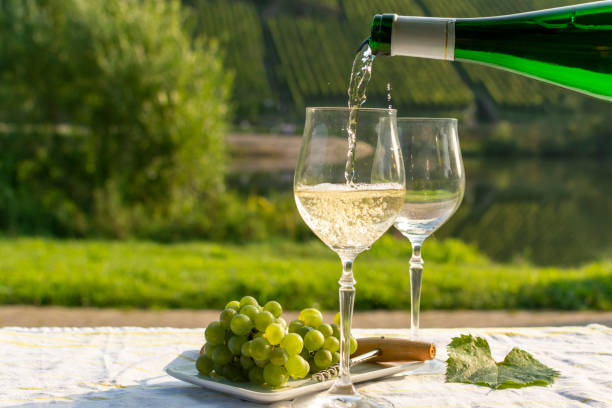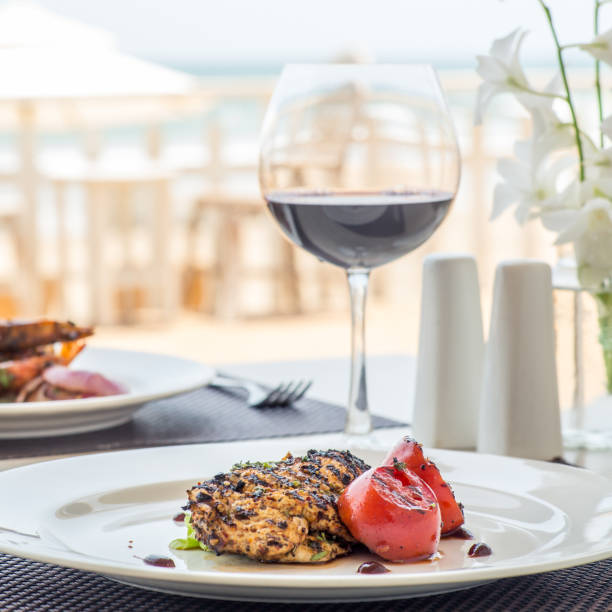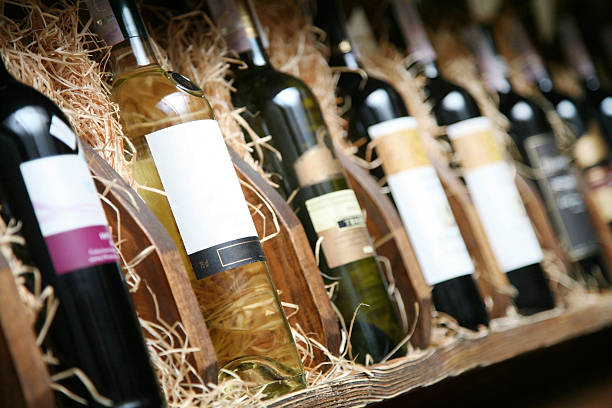The prices of wine are displayed in restaurants either on the menu or on a large board. The general perception of diners is that the prices are set, and there is no room for bargaining. Restaurants must know how to set prices for both food and beverages. There is a wide range of pricing for wine amongst the food service operators, making it difficult to define an industry standard. The way that restaurants price their wine is quite puzzling. Barth (2011, p. 702) states that “restaurant managers use various schemes and criteria for pricing their wine list.” The most common way to price wine is to make it two to three times its cost […]. This is what restaurateurs call a markup ratio. It is not the same thing as retail markup. The wine price markup in a restaurant is the additional amount that the manager adds to the cost of purchasing the wine. The markup is usually expressed at the restaurant as a percentage of the wine’s purchase price. Many restaurant owners also say it is a percentage of gross profit.
Mattila and Gao (2016) state that “pricing can be driven by the market, customers, or competition. ” Pricing strategies can be influenced by the restaurant’s positioning and characteristics, as well as institutional and environmental factors. Restaurant groups that operate in different parts of the country (e.g., It is not always possible to have one master list that covers all locations due to different price points. It is also necessary to have a different mix of suppliers. This “one size doesn’t fit all” effect, which is also present elsewhere in the wine chain (Pomarici et al., 2017), reflects the need to adapt pricing strategies for local environments. Certain distribution systems, like the US three-tiered system, can help increase the variety of pricing strategies available to national chains and groups of restaurants. Manufacturers or suppliers/importers, for example, sell to wholesalers, who then sell to retailers, including restaurants, at tier 3. The consumer is the last step. Between tiers 1 and 2, there is a federal excise, a state tax between 2 and 3, and finally, a sales tax for the consumer between 3 and 4. The US has many different regulations for alcohol because each state can regulate the sales and distribution within its borders, both at the wholesale level and at the retail level. Restaurants in Canada, Northern Europe, and India may also be forced to adjust their pricing strategy due to government monopolies on the distribution of alcohol.
Exhibit 1: The US regulatory system with three levels
The US Alcohol and Tobacco Tax and Trade Bureau has adapted this information.
Alcohol revenue is very important for restaurant profitability. Pricing mistakes can have a huge impact on a restaurant’s profitability. This essay-style piece examines the practices of pricing wine at restaurants rather than making recommendations about how restaurants should do it (Optimal wine pricing strategies are discussed in Coqueret 2015). Our approach is based on a thorough literature review as well as anecdotal data. PRISMA is an acronym for Preferred reporting items for systematic reviews and meta-analyses. The protocol originated in the medical field and uses a checklist, a four-phase diagram, and a four-phase diagram to conduct a periodic review. It is attracting increasing attention from hospitality scholars (see, for example, PahlevanSharif et al., 2018). Google Scholar is a traditional bibliographic database. (Rethlefsen & Page 2022). We use “wine” and the word “restaurant” on one hand and “wine” and the words “on-trade premise on the other. If we get over 1,200 results, researchers are not interested in the pricing of wines in restaurants, except for a few notable exceptions, such as Amspacher (2011) or Livat and Remaud (2018). The mapping of the intellectual territory for wine prices in restaurants is currently done using a less formalized method. We adopt a cherry-picking strategy and consider only research that is devoted to restaurants and other on-trade premises. Wine pricing may not be the main topic of the study, but it could appear as an ancillary issue or a comment. This seems reasonable, as we are not trying to support a particular position but rather to develop a preliminary state of knowledge. We have identified three main topics and set them here. First, we show the relationship between wine pricing and the performance of a restaurant. Next, we look at the costs related to wine for the restaurant and pricing strategies. We then discuss the price of wine in restaurants. The last section concludes.
WINE AND RESTAURANT PERFORMANCE
The Dining Experience is Complete with Food and Wine
Many factors can influence customer satisfaction, such as the environment and context of the restaurant (Furst et al., 1996; Peters & Remaud, 2020). In this perspective, there is a widespread belief that customer satisfaction can lead to loyalty. However, such a relationship has been found to be weak in most cases (Barnes et al., 2016). In the context of full-service restaurants (Dey et al., 2017), customer delight is a significant factor; however, in the context of fine dining (Bowden & Dagger, 2011). The pairing of food and wine has a substantial impact on customer satisfaction. (Choi & Silkes 2010; Paulsen et. al., 2015.). Even the glassware enhances the dining experience. (Billing and al., 2008).. Restaurant owners and managers are constantly looking for ways to stand out in a highly competitive market. In addition, consumer reviews and expert opinions may also contribute to the development of attractiveness. (Gergaud, et. al. 2015). Cassar et al. (2020) examined comments made on TripAdvisor about the top five and bottom five restaurants in the Laliste.com list of the top 1,000 restaurants around the world. This linguistic analysis of these comments shows that Wine, Food, and Course are the three most popular words used to describe their satisfaction regarding restaurant visits and experiences.
Wine is a major factor in many customers’ dining decisions. The menu can include suggestions for food and wine pairings that reduce the financial and social risks associated with ordering wine and increase wine sales. Some restaurant patrons use the wines on the menu as part of their differentiation strategy. Berenger and co. Came to this conclusion. (2009) identified three types of upscale restaurants, with one focusing on wine as an important feature and positioning of the restaurant.
Restaurants’ Profitability and Wine Sales
Researchers in the 1960s identified wine as a factor contributing to restaurant profitability. (Barbour 1961; Wile 1962). Gil et al. (2009) estimate that one-third of the average Valencia check reflects wine sales. According to a restaurant revenue-management approach (Thompson, 2010), wine can be a key item in managing restaurant profitability. Wine can be a key factor in a restaurant’s success and performance through perceived quality, loyalty, and customer satisfaction (for a review, see Lucie Sirieix et al., 2011; Terblanche & Pentz, 2019). The sale of wine can be increased by the recommendation of wines, pairings of wine with food, and tasting portions. (Wansink, et. al., 2006.). The guest’s bill will increase when you sell a glass of wine or a full bottle. This automatically increases the gratuity for the staff.




